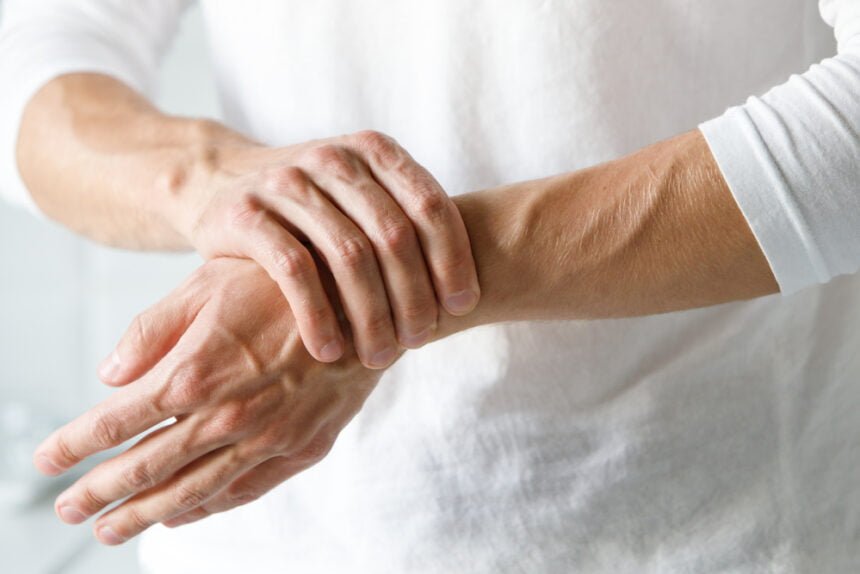Hand arthritis and its impact on the entire body is a widespread disease that millions of people globally suffer from. They can affect the daily lives of people and touch all the basic activities like buttoning a shirt or holding a cup of coffee. The painful sensation accompanied by stiffness and the fact that the hands lose function for long periods can be frustrating and can make you powerless.
But there’s good news! The specialty of hand orthopedics becomes a glimmer of the light that one can hold. Among the most highly specialized is the hand orthopedic specialist, because these physicians deal with a range of pathologies of the wrist and hand, including different types of arthritis. Physiotherapy combined with proper diagnosis and early intervention efforts can become a successful management tool that will not only eliminate pain but also help you remain an active person by maintaining top functionality of the hands.
Understanding the Different Forms of Hand Arthritis and Their Effects
Several types of arthritis can affect the hands, each with its underlying cause and symptoms:
- Osteoarthritis: This is the kind most familiar, similar to how joint contracts when the functioning of the cartilage (around the joints, tissues that cushion them) breaks down. It is commonly the joints in which the disease arthritis will have its early signs manifesting at the end of the finger and around the wrist. For RA patients, symptoms come and go, or remain for some time, and may expand to the joints, where there are bony nodules (bumps) on some of the joints.
- Rheumatoid Arthritis: A chronic disease of the autoimmune system that instead gives rise to prolonged attack on its organisms triggered by the improper immune response – external invaders like bacteria, viruses, or toxins – resulting in the painful symptoms set in hands and other joints of the body. The evolution of the distress will probably start with suffering, stiffness, swelling, warmth, or redness in the joints. In comparison, the joints of the fingers towards the fingertips most frequently afflict rheumatoid arthritis, while usually osteoarthritis strikes bigger joints. The deformation can be from bay ear lobe and swan-neck deformity whereas boutonniere deformity can be from bent top finger joints.
- Psoriatic Arthritis: This type of motif is a companion of the psoriasis skin disease. It might be a source of pain, swelling, and stiffness in hand joints or feet. Likewise, some people may display nail changes, which include pitting and discoloration.
The vulnerability of the hand’s complex structure, with numerous small joints constantly in use, makes it susceptible to these wear-and-tear or inflammatory processes. Additionally, factors like age, family history, previous injuries, and repetitive stress can increase the risk of developing hand arthritis.
Early Diagnosis: The Key to Effective Management
Delay in the diagnosis and treatment by ignoring hand pain or by regarding it as a common phenomenon can lead to prolonged pain and delay the symptoms improving. Early detection in orthopedic practice for the hand period dictates the proper treatment of hand arthritis. A specialized hand orthopedic surgeon should be sought for thorough evaluation. The specialist will do a complete physical examination that includes joint sensitivity, edema, and reduction in joint range of motion. X-rays are good at seeing the details of the joint surfaces. If there is any joint damage, narrowing, or inflammation we can see it on the x-ray. In part, blood tests might be needed for the physician to arrive at the right diagnosis of the type of arthritis.
Fluctuation of their inflammation also interrupts the hand’s bones’ functionality, thus, leading to more pain, if small problems are not treated on time.
A Multifaceted Approach to Treatment in Hand Orthopaedics
Individuals can experience symptom differences despite similar conditions. Identification of the cause and aggressiveness of arthritis can help in the formulation of management strategies. Hand orthopedic physicians take particular into account and make a personalized approach to your needs in line with a particular manifestation of arthritis. The treatment plan often involves a combination of non-surgical interventions:
- Medications: To combat pain, we have acetaminophen or ibuprofen that can relieve pain and fight postinfection or post-surgery pain. For rheumatoid arthritis, DMARDs are many and these medications are often used to decrease the speed of the disease’s progress.
- Hand Therapy: The development of hand therapy was when orthopedics of hand triumphed, and they formulated the method of either exercises or manual techniques to facilitate extension and flexion, muscle strength around joints, and for maintenance of range of motion. A customized rehabilitator will help you be more in charge by customizing the plan so that it can be immediately applied at home for better treatment of arthritis.
- Splinting: The use of splints exerts its function in both stabilizing joints to calm pain and irritation and support weak ligaments, thus proper alignment and healing are achieved.
- Cortisone Injections: Localized off-loading of cortisone serves as an effective pain reliever thereby providing relief for inflamed joints
In severe cases where conservative non-surgical treatment fails, a hand surgeon may do the joint replacement or fusion surgery. Nevertheless, many cases are successful with prompt diagnosis and a detailed therapy regimen that will prevent the need for surgery.
The Power of Hand Therapy in Managing Hand Arthritis
Hand therapy plays a crucial part in hand arthritis management. Qualify hand therapist will examine your hand function and come up with an individual tailored program of specific exercises, aimed to amend areas of weakness or stiffness. The program may include:
- Range-of-motion exercises to improve flexibility and prevent joint stiffness.
- Adding these specific exercises such as strengthening the muscles and providing support to the joints increases the hand function and reduces the pain level.
- Splinting techniques to provide support and rest to specific joints as needed.
- Patient education on proper joint protection techniques and lifestyle modifications to manage arthritis effectively.
Hand therapy is most effective when initiated early and continued as part of your long-term hand arthritis management plan.
Living Well with Hand Arthritis: Daily Practices and a Hopeful Outlook
Though life with arthritis of the hand is unbearable, it isn’t to let it settle that you just surrender your standard of life. Here are some daily practices that can help you manage your condition:
- Joint protection: Notice what type of activities increase the inflammation of your hand. Pay attention and avoid them. Apply ergonomic tools for everyday tasks, distribute weight evenly when carrying items, and have short-term breaks to have the appropriate recovery.
- Heat and cold therapy: When a designed heat or cold pack is placed on swollen joints, temporary pain relief is offered. Give preference to your physician or psychologist and ask them to recommend the most efficient option for your particular case.
- Maintaining a healthy weight: Heavy loading of the joints by the excess weight becomes more and more typical. A balanced weight means less pressure on your hands so keep low your chance of the disease by paying attention to your health.
- Assistive devices: Walk through the whole approach as unveiling assistive devices for example jar openers, gripping aids, and thicker utensils can be a great help to make daily activities easier and eliminate the strain from your hands.
- Stress management: Stress makes arthritis joints more painful. Through relaxation techniques such as yoga and meditation, one can calm down and enhance their health to an above-par level.
Conclusion: A Hopeful Outlook with Hand Orthopaedic Care
Hand arthritis, dealing with the pain and the limitations it brings, can be difficult, but not impossible. It is an archetypal example of a pain in the neck so to speak, but no longer the center of your life. In doing the orthopedic hand, one has the opportunity to give the patients the diagnosis, treatment, and management of the arthritis. While seeing a specialist right after the onset of the symptoms will help you get a detailed plan of action that includes future observation, a regime of treatment, and continuous self-management, the overall outcome will be the improvement of the hand function, lessening the pain, and continuing normal activities. Hands ache. They do not function either well. Nobody should delay scheduling an appointment with an experienced hand orthopedic doctor. When you have hand arthritis, it can be successfully treated and supported, and you can still have the same active life despite that.







